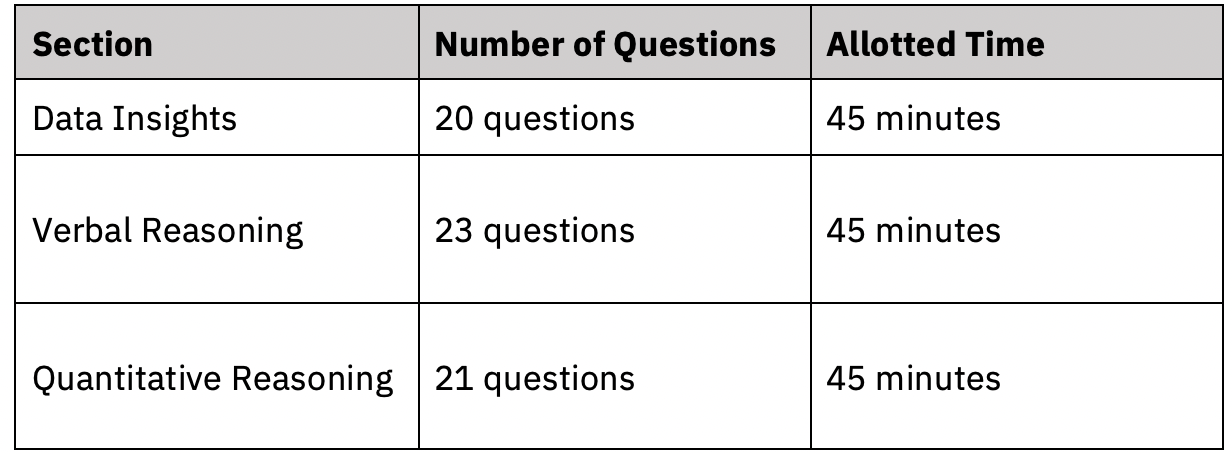Graduate school testing has entered a new, shorter era! As of autumn 2023, the GRE is now nearly 2 hours shorter than it used to be, and the GMAT now offers a similarly-shortened “Focus Edition.”
What, you might ask, has brought about this revolution? Well, the changes to both tests are (transparently) the result of an arms race between the companies behind them—GMAC and ETS.
In recent years, more and more business schools have come to accept the GRE, which has contributed to a decreasing market share for the GMAT. Hence the new, shorter GMAT, which also includes other changes designed to attract potential test-takers who may have been put off by the design of the old test.
About three months after GMAC announced the shorter GMAT, ETS announced the shorter GRE—explicitly noting that their new test would be even shorter than the new GMAT and that it would be available sooner, too. Since then, both companies have gone to lengths to pitch their new test as better than the other’s.
All of this competition is ultimately a boon to test-takers. In this post, we’ll break down everything you need to know about the major changes to both the GRE and GMAT.
How has the GRE changed?
To shorten the GRE to 1 hour and 58 minutes, ETS eliminated the argument essay, the experimental section, and the break, and it shortened each of the remaining sections. Here’s the new breakdown:

That comes out to approximately 1 minute, 30 seconds per Verbal question and 1 minute, 45 seconds per Quantitative Reasoning question.
The GRE is still section-level adaptive, so within each section, test-takers can freely navigate back and forth to questions, and a test-taker’s performance on each Section 1 will influence their scoring band and question difficulty in Section 2. The better you do on each section 1, the more challenging and more valuable the questions in Section 2 will be.
The question types have not changed, and students can still use an onscreen calculator for every question in the Quantitative Reasoning sections.
For practice materials, ETS has begun to gradually update its five official digital practice tests so that they reflect the test’s new structure.
How has the GMAT changed?
Compared to the shortened GRE, the GMAT Focus Edition has more substantively changed from its old format.
The Focus Edition is now about an hour shorter than the old test—clocking in at 2 hours, 15 minutes. It eliminates the Analytical Writing section so there’s no longer any essays to write. It also shortens the remaining sections by eliminating question types (most notably the grammar-based Sentence Correction questions), and it combines Data Sufficiency questions with the old test’s Integrated Reasoning section to form the new “Data Insights” section.
All three of its sections now count equally toward your score. Here’s the new breakdown:

That comes out to nearly 2 minutes per question in Verbal Reasoning and a bit more than that per question in the two math-focused sections. This is one bullet point where the GMAT Focus Edition has a clear edge over the GRE (a point that is, naturally, highlighted on GMAC’s website).
The GMAT is still adaptive by question—meaning that the test adjusts its difficulty and your scoring band from one question to the next within each section. However, test-takers will now be able to bookmark questions for review and change up to 3 answers in each section. This is still considerably less flexible than the GRE, but it does somewhat address one of the major complaints test-takers had with the old GMAT.
The rest is staying the same. There are no new question types, and test-takers are still restricted from using calculators on the Quantitative Reasoning section.
Though it may be shorter, the Focus Edition isn't any easier. In fact, results from the first cohort of test-takers show that the test’s scoring algorithm has become even more punishing than it used to be. On its website, GMAC acknowledges this fact but attempts to spin it as a positive: “the updated score scale resets the score distribution, allowing schools to better evaluate applications and giving you a better opportunity to stand out.”
GMAC has released some prep materials for the Focus Edition, including a new edition of the Official Guide, but prep materials are still a bit more limited for the new test than they were for the old.
Until January 31st, 2024, the GMAT Focus Edition will exist alongside the old GMAT, so applicants can choose to take either test. Business schools will be able to tell which test you took by looking at your scores—scores for the Focus Edition end in a 5, whereas scores for the old test end in a 0.
Which test is right for me?
Assuming the programs you’re applying to will accept either test, the best way to get started is to take a diagnostic of each, then compare your starting scores.
If your percentiles are similar, then consider how you felt during each test and also which topics you would need to study in order to improve on each.
For instance, if you’re especially vocabulary-averse so you don’t fancy the idea of memorizing hundreds upon hundreds of words, you may want to steer clear of the GRE. Conversely, if the GMAT’s Data Sufficiency questions are already giving you nightmares, well…then you know what to do.
Work with an experienced GRE or GMAT tutor
Still have questions about which test is right for you? Reach out to us here. Our team of experienced GRE and GMAT tutors is ready and happy to help in any way they can.
About ArborBridge
ArborBridge is the global leader in innovative, digital, one-on-one tutoring. With nearly a decade of experience teaching students online, ArborBridge supports students of all kinds: home schoolers, AP students, test preppers, and more. Our tutors specialize in creating personalized plans and in providing compassionate support for students and families.






